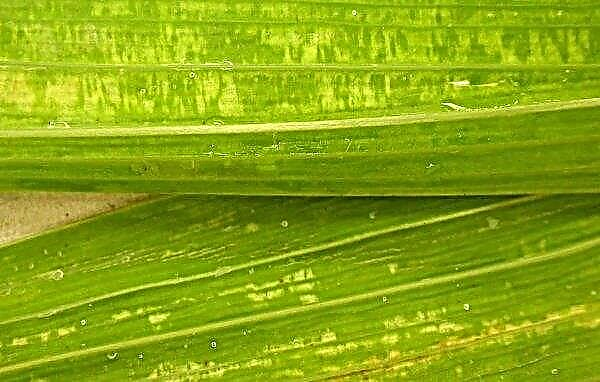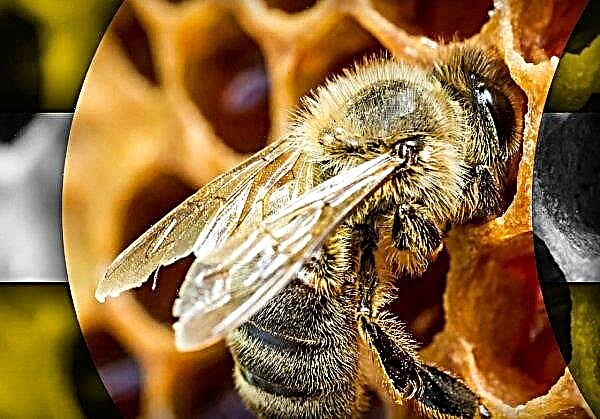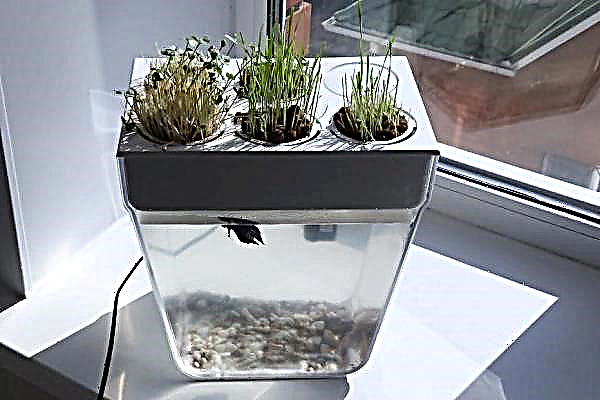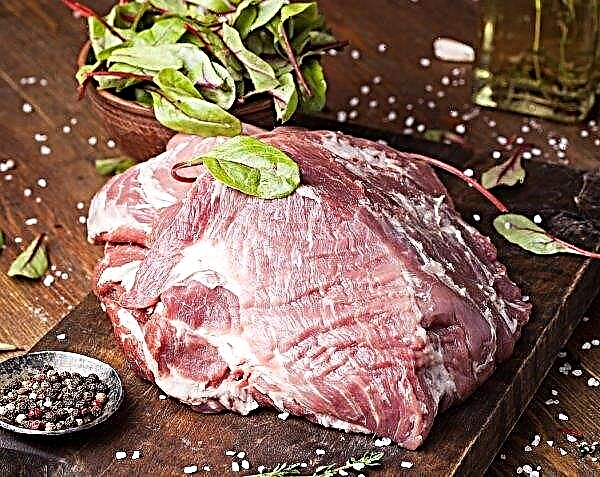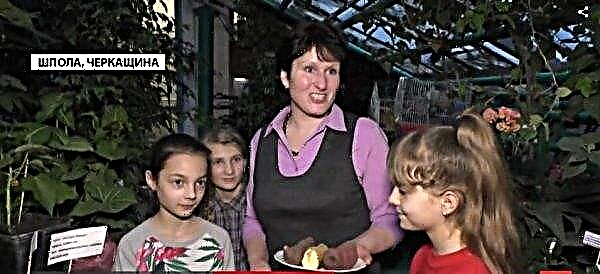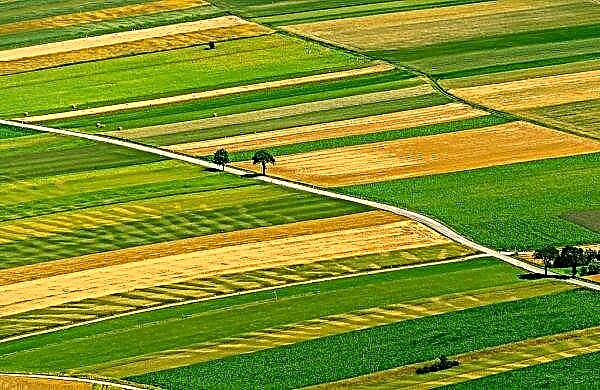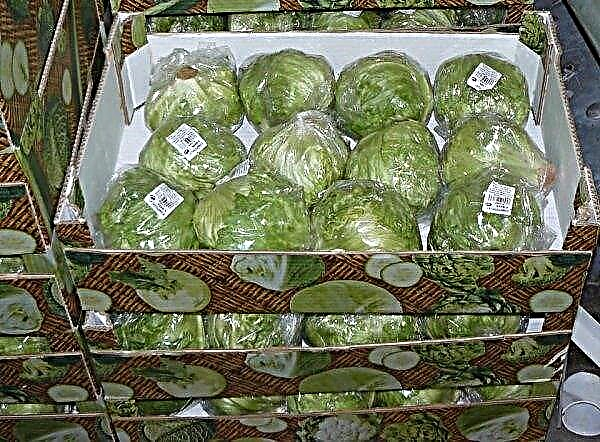The correct organization of the greenhouse provides the possibility of the most effective use of each centimeter of area. An important role in this is played by the passages between the beds, which, with proper design, can save the usable area and become an additional landscape decoration of the greenhouse. How to make tracks yourself, and what material is better to use - later in the article.
Why make paths in the greenhouse between the beds
The aesthetic function of the paths in the greenhouse does not cause any doubt, since immediately after the completion of construction work, the room acquires a well-groomed, neat and harmonious look. However, in addition to aesthetics, paths have a more practical function and can significantly facilitate the summer resident work on the care of plants.
Important! No matter what size or material the track will be made of, the main thing is that it meets two basic requirements: it absorbs moisture well and does not slip.
Among the main positive aspects of the use of paths between beds, experienced vegetable growers note:
- reduction in the area required for weeding;
- Convenience in carrying out irrigation, top dressing plants, loosening the soil and processing crops from pests and diseases;
- unhindered access to plants.
 In any case, arranging paths in the greenhouse is convenient, practical and aesthetically attractive.
In any case, arranging paths in the greenhouse is convenient, practical and aesthetically attractive.What material can be used
To arrange the aisles, specialists use various materials: bulk, degradable (organic), monolithic elements, etc. The choice will mainly be determined by the personal preferences of the summer resident and his financial capabilities.
Did you know? In the United States, concrete is the most popular building material for highway coverage. In the state, more than 55 thousand miles of roads are made of the described cement mixture.
Gravel, crushed stone
Bulk materials, for example, gravel or crushed stone, are considered one of the most popular and common for organizing tracks.
- Their relevance is due to the presence of significant advantages:
- availability and low cost;
- functionality and unpretentiousness in leaving;
- good path density with the correct selection of the material fraction;
- excellent durability;
- simplicity and ease of organization.
 Meanwhile, to ensure good adhesion in the manufacture of paths of gravel and gravel, it is necessary to use any building mixture, otherwise the materials can stick to shoes and spread throughout the room
Meanwhile, to ensure good adhesion in the manufacture of paths of gravel and gravel, it is necessary to use any building mixture, otherwise the materials can stick to shoes and spread throughout the roomA natural stone
Natural stone belongs to the category of expensive materials, but it is characterized by a long service life, high strength, reliability, resistance to abrasion and wear, it has a wonderful appearance. Granite, marble, chipped or tiled stones, paving stones can act as a natural stone. Of course, a significant disadvantage of such materials, as noted above, is the high cost, but it is fully offset by increased strength properties, a long service life and excellent decorative effect.
Of course, a significant disadvantage of such materials, as noted above, is the high cost, but it is fully offset by increased strength properties, a long service life and excellent decorative effect.
Various wood
Often paths in a greenhouse are made of different types of wood:
- boards or timber;
- logs and hemp.
Did you know? The most expensive wood in the world is considered the raw material of mahogany mahogany. Elite pieces of furniture and exclusive musical instruments are made from it.
One of the main advantages of wood is its high environmental friendliness, ease of use, low cost. However, such an economical option is quite impractical. Before using wood, it must be carefully treated with special antiseptic solutions or paints and varnishes that provide protection against rot, mold, fungi. But even such processing does not guarantee a long service life of the coating. The maximum period of operation of a wooden walkway rarely exceeds 10 years.
Polycarbonate, rubber
Enterprising summer residents advise to make a path from old rubber automobile tires. This design is quite strong, non-slippery, practical, wear-resistant, resistant to the harmful effects of external factors. It is easy to create and easy to mount.
Important! Experts do not advise refusing to create passages in the greenhouse. Earthen flooring is dirt, puddles, a high risk of injury due to too slippery surface.
The tire tire path may have different widths and lengths, and may consist of several rubber bands. Between the tapes it is necessary to make small gaps, which are required to drain excess moisture and quickly dry the floor. Polycarbonate sheets, which can also be laid out a path, are considered an excellent alternative to rubber.
- Among the advantages of polycarbonate note:
- high strength and elasticity;
- ability to withstand low and high temperature indicators;
- simplicity and ease of installation;
- Excellent heat-saving features.
 Polycarbonate flooring can last 10-15 years or more. However, compared to rubber, they will cost more
Polycarbonate flooring can last 10-15 years or more. However, compared to rubber, they will cost moreConstruction Materials
One of the most reliable and budgetary options for creating paths in a greenhouse is filling in previously prepared formwork of cement mortar - concrete. Although the material does not have a presentable appearance, it is very durable, has a long service life, and is resistant to mechanical damage. It should be noted that working with concrete requires certain skills and abilities, since here it is necessary to observe the temporary cycles of solidification of the building material.
Did you know? The largest number of greenhouses is located in the Netherlands. Their total area is 10 500 hectares. At the same time, Dutch greenhouses are traditionally covered not with a film or plastic, but with glass.
As a material for arranging the track, many summer residents use brick, which can be laid with various types of masonry: diagonal, straight, in the Venetian style, parquet, etc. After 10-15 years of contact with soil and water, the physical qualities of the material are destroyed, it begins to crumble. and deform. It is better in this case to use sidewalk types of bricks, which are more durable and practical. Building bricks are easy to install, have an aesthetically attractive appearance, but are not very durable
Building bricks are easy to install, have an aesthetically attractive appearance, but are not very durable
How to choose the right material for your greenhouse
The main selection criteria for the organization of paths in the greenhouse, in most cases, are:
- the strength of the flooring and its life;
- material cost;
- simplicity and ease of installation.
It is important that the future flooring does not become slippery when moisture gets on it and is as safe as possible for the vegetable grower. Of course, the selection of material will be determined by individual preferences, but before that, you need to study the features of each of them. Often, organic waste is used as flooring: sawdust, straw, bark. The advantages of their use are obvious: they are cheap, easy to install, absorb moisture well, do not rot, at the end of the season they are easily removed from the greenhouse and dug in the garden in order to improve the soil composition.
Monolithic concrete and natural stone walkways, although extremely practical and durable, require proper and constant care. In addition, their implementation will have to be well spent. When wondering how to cover paths in a greenhouse, many summer residents opt for bulk building materials - gravel, gravel, pebbles, expanded clay. They are inexpensive, practical, quickly mounted. However, when working with soil, the integrity of such floors should not be violated, since the ingress of crushed stone or crumbs from stone into the ground can provoke a deterioration in its nutritional qualities.
How to make a path in the greenhouse with your own hands
With a proper approach to the process of creating a track, careful preparation of the necessary tools and materials, even an inexperienced summer clerk will be able to turn into reality projects of any complexity with his own hands with minimal time and physical costs.
Material selection
Optimal greenhouse walkways should be strong, stable and safe for humans. It is these principles that should guide the choice of material for their organization. As noted above, paths made of organic materials, pebbles, gravel and rubble, rubber tires, polycarbonate will be a good budget option. If possible, you can make passages of concrete, brick, paving slabs or pavers.
The distribution of tracks between the beds
Before laying tracks in the greenhouse, you must clearly design their location. When planning trails, it is recommended that you adhere to the principles of rationality, practicality and convenience, it should be noted:
- dimensions of the greenhouse;
- type of plants grown (tall, stunted, with medium growth);
- placement of beds.
The width of the passage in the room should be such as to ensure unhindered movement of a person along it and the ability to use small garden equipment. For most standard size greenhouses, a central location is suitable, which involves one wide aisle in the middle. At the same time, the beds are located on both sides of the track, which provides free access to vegetation. The optimal passage width is considered to be a distance of 50–70 cm.
At the same time, the beds are located on both sides of the track, which provides free access to vegetation. The optimal passage width is considered to be a distance of 50–70 cm. The most convenient option for placing tracks in a long and narrow greenhouse are two paths of medium width near the walls. In this case, the central part of the room is occupied by planted crops, and access to them is on the sides. Wide greenhouses allow you to equip several walkways placed between the beds. In this case, the principle of arranging the premises will be based on the alternation: bed - path - bed.
The most convenient option for placing tracks in a long and narrow greenhouse are two paths of medium width near the walls. In this case, the central part of the room is occupied by planted crops, and access to them is on the sides. Wide greenhouses allow you to equip several walkways placed between the beds. In this case, the principle of arranging the premises will be based on the alternation: bed - path - bed.
Step-by-step installation instructions
Installation of the track in the greenhouse is not too difficult and, with careful preparation and observance of the main stages of installation, is able to pass quite quickly and easily. The passage installation algorithm is based on the following actions:
- Design the location of future paths.
- Regardless of the material used, remove the topsoil from the surface.
Video: installing a track in a greenhouse
Subsequent work is carried out, depending on the material:
- stone: stones are laid out on a pillow of sand, pressing tightly to each other;
- gravel or crushed stone - a small layer of bulk materials is poured on top of the soil;
- concrete: make formwork from wooden boards, cement mortar is poured into it;
- tiled: from paving stones or special tiles - the elements are laid close to each other.
 If necessary, the aisles are fenced with curbs made of stone, brick, wooden boards. Each summer resident can independently equip the greenhouse and distribute its space with maximum benefit. The organization of passages between the beds makes it possible to significantly simplify the work of growing and caring for plants, increase the functionality and practicality of the land, and also give the room a more comfortable and aesthetically attractive appearance.
If necessary, the aisles are fenced with curbs made of stone, brick, wooden boards. Each summer resident can independently equip the greenhouse and distribute its space with maximum benefit. The organization of passages between the beds makes it possible to significantly simplify the work of growing and caring for plants, increase the functionality and practicality of the land, and also give the room a more comfortable and aesthetically attractive appearance.


